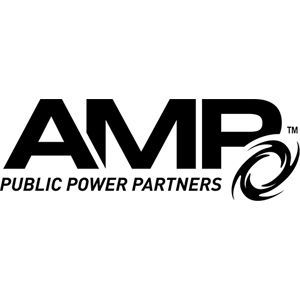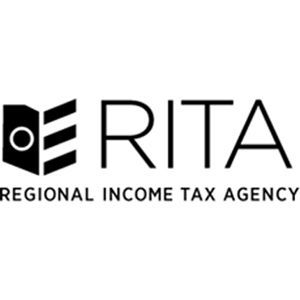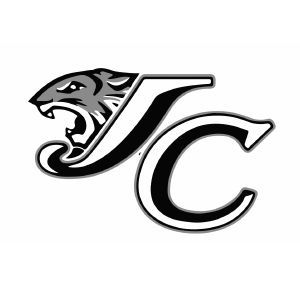JACKSON TWP. EDUCATION HISTORY
JACKSON TOWNSHIP EDUCATION HISTORY
First Schools-were taught by the local clergy. They were called Sunday School or Sabbath School by the Seventh Day Baptist Church.
First Public School in Jackson Township was located ½ mile north of Elm Corner on the east side of the road. It was a log building that had formerly been a residence. The first teacher was James Hill. At present this location is the residence of Tony and Nancy Meyer.
First School House built in the Township was built about ½ mile north of Elm corner on the John C. Elliott Farm in 1840. It was a round log building with mud and stick chimney. The benches and desks were constructed by boring holes in the floor and inserting wooden pins. Then a rough hewn slab was placed on top. The writing desks were equipped in the same manner, with several goose quill pens provided. Ink was made from dogwood bark or poke berries. Blackboards were unknown. The fireplace was made large enough to take in a log about eight feet long and would consume nearly a cord of wood daily.
History of Education in Jackson Township The early pioneer families were self-sustaining. They cleared the ground, prepared the soil with a wooden-shore plow, sowed and reaped their crops, spun, knit, wove and sewed their own clothing. The children were required to take part in these activities and helped according to their ability and strength. They learned to do by doing. Their social skills were learned outside of school. By the time boys and girls reached maturity they could do everything anybody else in the community could do. From learning by doing the course of study went to textbooks. A lot of information in the text books was foreign to the children and hard for them to relate to.
Pupils were grouped by how well the individual would read, not by the grade or age of the student. Sometimes these buildings had two rooms so the younger children would be separated from the older children. The old school districts were an important place in the social life of the community and it was the center of their social life. Activities included spelling bees, box socials, plays, Christmas programs, debating clubs, singing groups and baseball teams.
There was usually about two or three months of school in the year. The enrollment varied with the type of farm work, because boys and girls did help their parents at home. The teacher was paid by the parents in proportion to the number of children sent. The teacher would “board round”, staying with one family one week and next week with another, and so on , until each had taken his turn.
The teacher had a thousand and one iron clad rules, the violation of any one of them called for the application of a tough hickory switch. The teacher made up his own punishment. The requirements of the first teachers were that they had the ability to read, to write and do arithmetic (no special education was required). By 1919 teachers were required to have a high school education plus 24 weeks of professional training to teach elementary and 30 weeks of professional training to teach high school. After the Civil War there was one important change-women took over teaching.
The first effort for higher education was the establishment of a select school in the old log S.D.B. Church which was located where the cemetery is now. This was started by Mr. Frank Babcock. A number of graduates from Mr. Babcock’s school were among the most successful teachers in Shelby and other counties.
Students walked to school. The first public school transportation was in a wooden school bus pulled by a team of horses driven by Oliver McGowen. Pupils brought their lunches with them every day (no hot lunch program). Most schools had an outdoor pump for water. Everyone used the same cup. A common washbasin was used to wash your hands. Everyone used the same soap, water and towel. Two out houses provided the restroom facilities; one for boys and one for girls. The building was heated with cord wood in a fire place or stove.
One room schools in Jackson Township were closed in 1928 with all students transferred to the schools in Jackson Center. These one room schools produced the great Americans whose lives we study today.
In 1914 the Rural School Code gave the power to the County Board of Education to create school districts. Tax money was collected to pay for the operation of these schools. The studies at that time consisted of the “Three R’s” ‘readin, ‘ritin and ‘rithmetic (not math). The McGuffey Reader was a popular book of that time. It was written by Professor McGuffey who taught at Miami and Cincinnati Universities. McGuffey’s Electric Reader Series was the most popular. It served 3 generations.
One Room Public Schools of Jackson Township
District 1-Big Woods School - located at 21734 Botkins Road; On the southwest corner of Botkins Road and Morris-Rose Road and is now the home of ???
District 2-Gross School or Heintz School - located on Botkins Road just west of the railroad. The school is no longer there.
District 3-Metz School - located at the northeast corner of Botkins Road and Metz Road. The land was donated by Jacob Metz. The Metz School was restored by Tom and Kim Reed. Today it is the residence of Lyle Faler.
District 4-Lott School - located on the east side of Morris-Rose Road south of 274. It is no longer there.
District 5-Jackson Center - The first school for Jackson Center students was located where the Seven Day Baptist Cemetary is today on Pike Street or State Route 274.
The first high school was built in 1889 at 205 West Pike which today is Café Veranda. It was a square brick building without a porch.
Jackson Center College - located next to the railroad where Memorial Park is today. This was an adventure funded by private citizens in 1889. The college closed after only four years. The highest enrollment was 140 students. The water tower was torn down in 1993.
In 1902 a brick school was built at the corner of Linden and Davis Streets. It contained 3 rooms down and 3 rooms up. The first floor was used for grades 1-8 and the second floor was used for the three-year high school (grades 9-11). Sometime after 1911 this became a four-year high school. Today this is the school’s north parking lot.
District 6-Poplar Knob - located at 13510 Pasco Montra Road on the northeast corner of Pasco-Montra Road and State Route 119. Today it is the residence of ???
District 7-Hawver School - located half way between Wells Road and State Route 119. This is a residence belonging to Mary Ruth Grubbs Green and Ed Hissom. Miss Lenhart taught here. When the schools were consolidated she was transferred to the Elementary School in Jackson Center. Here she met Harry Heintz whom she married. (At this time married women were not allowed to teach school).
The school board made what they said was going to be their only exception to that rule and asked her to stay. She became the first married female teacher to teach in Jackson Center.
District 8-Hopkins or Wildermuth School - located at 13901 Tawawa-Maplewood Road south of Wildermuth Road and is now a house owned by ??? In 1854 a female teacher, Miss Sara Forsythe, was paid $10.00 per month to teach 62 children for a term of 65 days. Most of the teachers were men until after the Civil War when women entered this field.
District 9-Elm Corner - located at 16984 Wones Road on the southeast corner of Wones and State Route 274. It has been painted white and is the residence of ??? Maud Griffin was one of the teachers at this school.
District 10-Shady Nook - located on the west side of State Route 65 south of Wells Road. This school has been torn down.
Montra School - located in Montra. (also know as “Ginger Hill”)
The first school was on Lot No. 5 on the east side of Pasco-Montra Road and south of Montra Road. This school is gone. It was replaced with a two story brick school located on Lot No. 53. It had 2 rooms up and 2 down. Basketball games were played on the second floor. It was used by the Montra Community Club after the school consolidation. The second story has been removed, but the bottom story is still in use today.
Consolidation - The Montra Special School District and the Jackson Center Village School District consolidated into the Jackson Rural School District in April 1927.
New Jackson Center High School - built in 1926. The 1902 square brick building at Linden and Davis Street was used only for the elementary grades. A playroom connected these two buildings.
New Jackson Center Gym - connected to the old high school. It was built in 1981.
New Jackson Center Elementary Building - built in 1965.
New Jackson Center High School -
built in 2003.
-
Community
-
Government
-
Departments
Utilities
-
Services
-
Development
-
Contact Us

All Rights Reserved | Village of Jackson Center
Site by: Midnet Media






